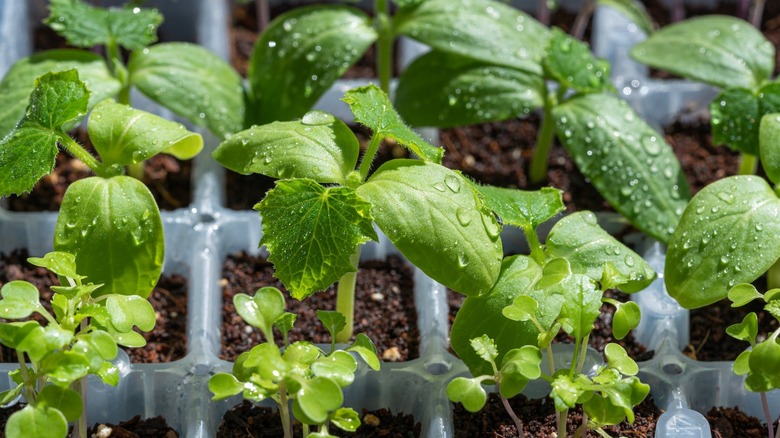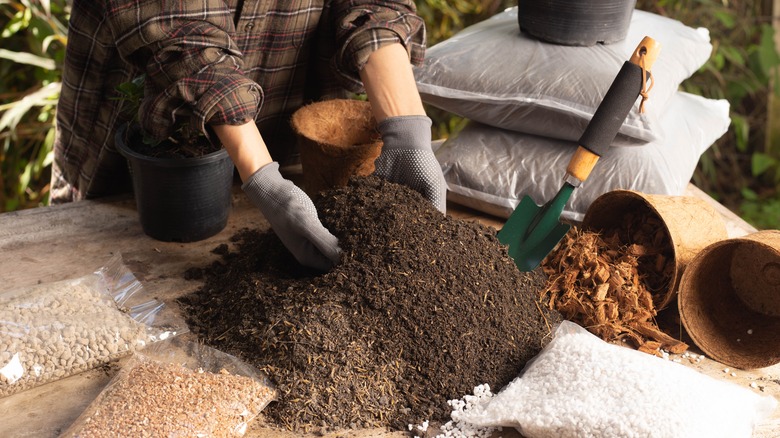The Simple Soil Trick For Starting Seeds More Sustainably
We may receive a commission on purchases made from links.
Growing plants from seeds takes up a lot of space, and plastic seed trays and pots often end up in the landfill. If you're looking for a way to make your garden practice more environmentally friendly and healthier for your plants, try ditching the plastic and start soil blocking instead. Rather than growing your seeds from a container, this method allows you to make cubes of soil that will act as their own planter.
Not only does this save space and cut down on waste, but your seedlings will benefit, too. Seedlings grown in pots or trays will sometimes form bound roots due to being confined, but when grown in a soil block, the roots will naturally prune themselves when they reach the block's border. This results in strong, thriving root systems, and the exposure to oxygen will make it easier for your plant to take in nutrients. Seedlings grown in soil blocks are also less likely to experience shock when transplanted, as you can simply plant the entire block in your garden or long-term pot.
How to start soil blocking
To start soil blocking, you'll need a blocker tool. There are various types and sizes of soil blockers, so it's important to consider what will suit your garden best. For a larger scale operation, you might want a stand-up blocker, which will allow you to make a dozen or more blocks at once, like this one from Amazon that creates 35. This type tends to be more expensive, but handheld blockers generally cost less and make about four blocks at a time. You can find smaller, handheld blockers for less than $20 on Amazon, too.
The size of the cubes is another important factor in this method of starting seeds more sustainably. Blocking tools can create 3/4-inch to 4-inch-sized cubes. If you have vegetable or flower seeds, a 2-inch block will work well, while smaller blocks are better for plants that sprout quickly. Tomatoes, peppers, and eggplants will typically need larger cubes. Once you have compacted the soil, place your seed in the indentation on the top of the cube and gently push it into the dirt. Start watering by misting, and once the seedlings begin to grow, water them from the bottom by placing them in a small amount of water. For the best results, try not to let your soil blocks get too dry.
What kind of soil to use when blocking
For your blocks to hold their shape correctly, you'll need to use soil that has a fluffier texture than traditional potting soil. This can be achieved by using mixes that contain coco coir or peat moss, or you can mix your own soil. For most recipes, you'll need compost, garden soil, perlite or coarse sand, and peat moss or coco coir. You can also add agricultural lime and organic fertilizer or a mixture of bone meal, blood meal, and wood ash. These ingredients will provide your plants with necessary nutrients while also helping to hold the cube shape.
Placing your blocks in a tray with drainage holes will make storing them easy, and you can set this tray in another one without holes for watering. While this may seem to defeat the purpose of ditching seedling trays, you can opt for sturdy, reusable options that will hold your blocks every year. With this method, you'll cut down on single-use plastics and create a more sustainable gardening practice, and your plants will thank you for it.


